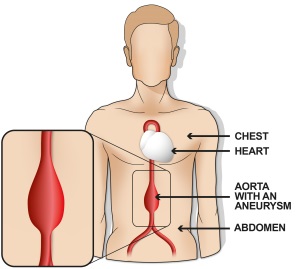I wonder if you, like me, watched last year's television coverage of Andy Murray helping Great Britain to win the Davis Cup. It was a truly proud moment for Britain. Andy’s return of serve made me think of a critical point in the screening pathway – when patients are referred.
When you refer a patient to another service, such as audiology or hepatology, your responsibility does not end until you are assured the referral has been received. It's a bit like tennis: there’s not much point in playing if there’s no one on the other side of the net to return the ball. Similarly, you need to make sure the referral centre receives and accepts your referral. In addition, you should monitor the outcome of all your referrals in order to show how well the screening programme is working.
How does this work in the NHS Abdominal Aortic Aneurysm (AAA) Screening Programme?
Men found to have a large aneurysm (5.5cm or wider) are referred to vascular services for surgery. In most cases the local screening programme and the vascular service are in the same NHS trust. But sometimes the case is complex and the man may need referral to a vascular service in another organisation. This is a bit like tennis doubles – it's more complicated and you need to pay extra attention.
Here is an example to illustrate where things can go wrong:
- Mr Jones is screened in Trust A and found to a have a large aneurysm needing complex surgery

2. Mr. Jones is referred to another hospital, Trust B for this procedure

3. A referral is sent by Trust A to Trust B by email but not followed up any further

4. Mr. Jones does not receive an appointment to see the vascular surgeon. There is a risk of rupture and death in patients who have large aneurysms that are left untreated.
Trust A believes it has made the referral and Trust B is unclear that the referral requires further action, so no action is taken.
Checks for providers and commissioners
Providers and commissioners of local NHS AAA screening programmes should check they are:
- tracking all screen positive AAA referrals using the national SMaRT IT system referral tracking application (installed in the software, July 2015)
- discussing referral trackers at screening programme boards
- following national guidance on managing safety incidents in NHS screening programmes
Resources
The screening programme has produced a number of resources to help. These include:
- service specification, which defines the responsibility of local programmes to track referrals
- revised guidance on responsibilities for men referred to other hospitals and on waiting time standards
PHE Screening blog
The PHE Screening blog provides up to date news from all NHS screening programmes – replacing our previously published newsletters.
You can register to receive updates direct to your inbox, so there’s no need to keep checking for new blogs.